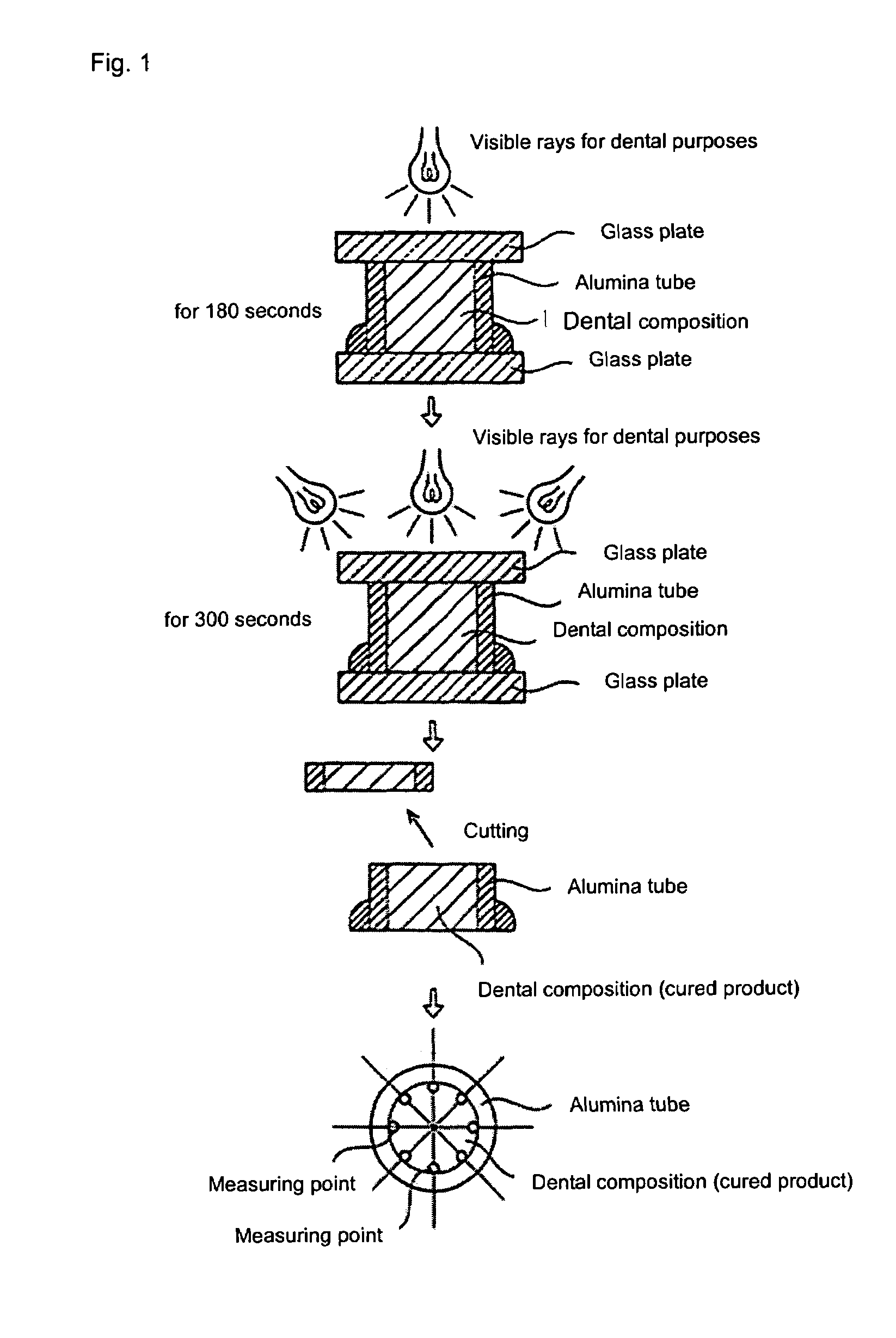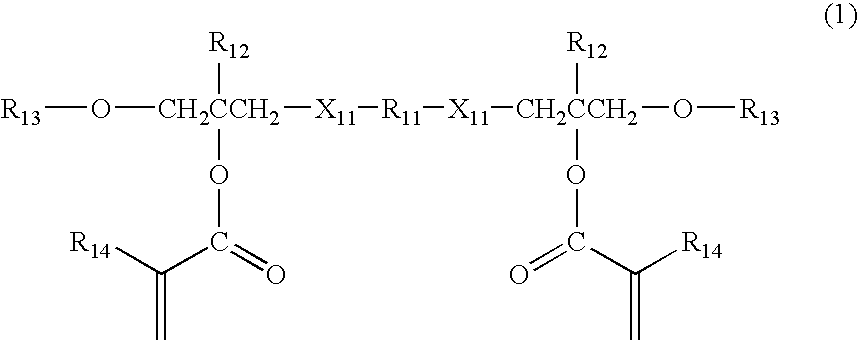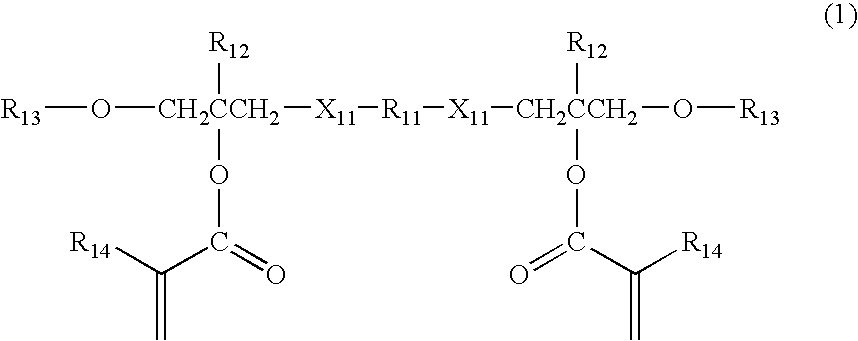(Meth) acrylic ester compound and use thereof
a technology of acrylic ester and compound, which is applied in the field of (meth) acrylic ester compounds, can solve the problems of difficult to form a machined surface with a polish clinically similar to that of natural teeth, difficult to finely pulverize glass, and many disadvantages to improve, and achieve excellent x-ray contrast properties, small shrinkage of polymerization and molding processes, and high productivity
- Summary
- Abstract
- Description
- Claims
- Application Information
AI Technical Summary
Benefits of technology
Problems solved by technology
Method used
Image
Examples
preparation example 1
Preparation of a Compound Represented by the Formula (5-1)
[0300]68.1 g (0.40 mole) of 4-phenylphenol, 0.53 g of 96% NaOH (1.2 weight % based on resorcin diglycidyl ether to be described below) and 40 g of N,N-dimethylacetamide were weighed and dissolved at 25° C. to obtain a mixture.
[0301]Thereinto was dropped a solution obtained by dissolving 44.4 g (0.20 mole) of resorcin diglycidyl ether having a main component of a compound represented by the formula (10-1) in 40 g of N,N-dimethylacetamide at 25° C. over an hour.
[0302]After the dropwise addition was completed, the resulting mixture was stirred at 100° C. for 6 hours, and then, it was confirmed that raw material was completely consumed by the high performance liquid chromatography (hereinafter referred to as HPLC analysis). Then, the reaction solution was diluted with 200 g of a mixed solvent of methanol and water (weight ratio=50 / 50). After the resulting precipitated crystal was filtered and collected, the collected reaction res...
preparation example 2
Preparation of a Chloropropionic Acid Ester Compound Represented by the Formula (6-1)
[0306]56.27 g (0.10 mole) of a compound represented by the formula (5-1) prepared in Preparation Example 1 was dissolved in 60 g of N,N-dimethylacetamide to obtain a solution. Thereinto was dropped 45.70 g (0.36 mole) of 3-chloropropionic acid chloride at 60° C. over an hour. After the dropwise addition was completed, the resulting mixture was stirred at 60° C. for 4 hours, and then, it was confirmed that raw material was completely consumed by the HPLC analysis. The reaction solution was cooled down to 25° C. and discharged in ice water. The reaction product was extracted using 250 g of toluene and washed with 3% NaHCO3 water. Then, the organic layer was repeatedly washed with water until it was neutralized. Then, the organic layer was separated and toluene was removed at 40° C. under a reduced pressure to obtain 76.60 g of a compound represented by the formula (6-1), i.e., a colorless, transparent...
preparation example 3
Preparation of a Compound Represented by the Formula (5-2)
[0310]A dihydroxy compound represented by the formula (5-2) was obtained in the same manner as in Preparation Example 1, except that 1-naphthol was used instead of 4-phenylphenol used in Preparation Example 1.
[0311]EI-MS (m / z): 510 (M+)
[0312]
PUM
| Property | Measurement | Unit |
|---|---|---|
| refractive index | aaaaa | aaaaa |
| particle diameter | aaaaa | aaaaa |
| particle diameter | aaaaa | aaaaa |
Abstract
Description
Claims
Application Information
 Login to View More
Login to View More - R&D
- Intellectual Property
- Life Sciences
- Materials
- Tech Scout
- Unparalleled Data Quality
- Higher Quality Content
- 60% Fewer Hallucinations
Browse by: Latest US Patents, China's latest patents, Technical Efficacy Thesaurus, Application Domain, Technology Topic, Popular Technical Reports.
© 2025 PatSnap. All rights reserved.Legal|Privacy policy|Modern Slavery Act Transparency Statement|Sitemap|About US| Contact US: help@patsnap.com



